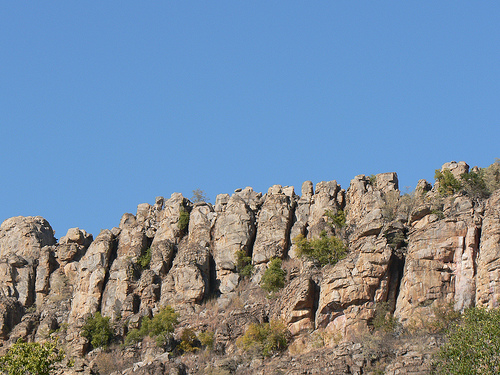

Location: Ngamiland District, Botswana
Tsodilo is located in Kalahari Desert in Botswana. It is famous for its historic rock art that dates back to 22000 BC. Tsodilo Hills in Botswana is a region in Ngamiland District famous for its historic rock art left by ancient tribes. Its importance and cultural significance made it one of the UNESCO World Heritage Sites. It is estimated that over 4500 rock paintings are found within its borders.
The Tsodilo Hills are located at a distance of
approximately 40 km from Chakave.
There are four main hills,
the largest of which has a height of 1400 m. Often three of these
four hills are called “man” (the highest), “woman” and “child”.
Between the two largest hills is a tent camp located near the most
famous part of the Bushmen’s drawings - the Lawrence van der Post
panel.
The Tsodilo Hills play an important cultural and
spiritual role for the Bushmen of the Kalahari Desert. There is a
belief that the “female” hill is a place where the spirits of the
deceased and the gods that rule the world from here rest. The most
sacred place is considered to be located almost at the top of the
"male" hill, where according to legend, the First Spirit prayed on
his knees after the creation of the world. Bushmen believe that the
prints of the knees of the First Spirit can still be seen on the
rock.
Most of the cave paintings are located on the "female"
hill, although the most famous drawings - "whale", "two rhinos",
"lion" - are located on the eastern side of the "male" hill.
Drawings in smaller numbers are also on other hills.